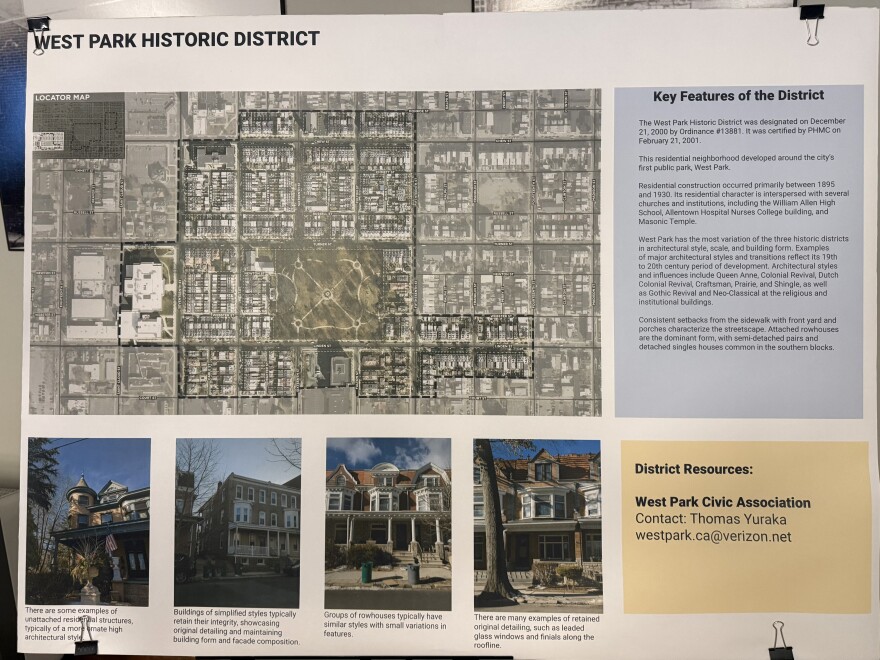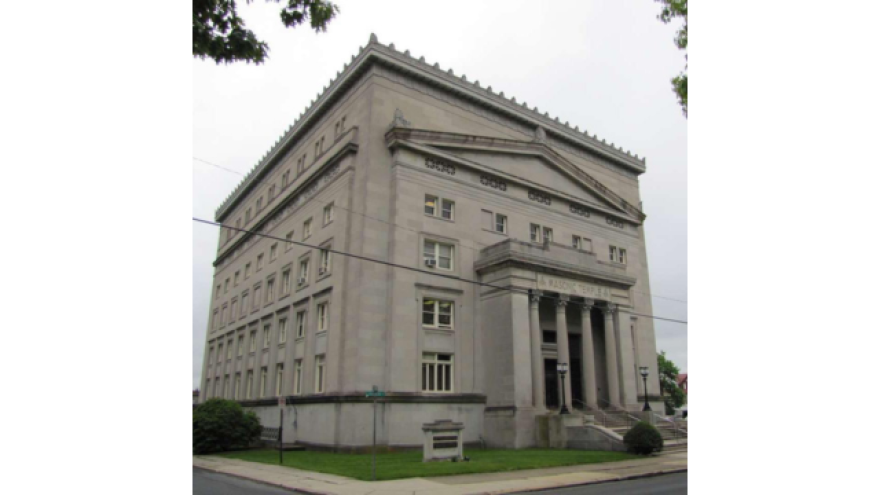ALLENTOWN, Pa. — The city’s three historic districts have received a comprehensive update and digitization that includes more than 2,000 property records.
The preservation milestone was unveiled at City Hall on Tuesday night by members of Allentown’s Historical Architectural Review Board, or HARB, and representatives from Landmarks SGA LLC and LGA Partners, a Pittsburgh-based architectural firm specializing in historic preservation.
Allentown's three historic districts are Old Allentown, Old Fairgrounds and West Park.
At the open house, Amy Ahn Baade, project architect with LGA Partners, presented the firm’s findings — the result of months of on-site fieldwork, detailed data collection and community outreach aimed at "modernizing" the city's historic resource survey — a required step for Allentown's status as a Certified Local Government through the Pennsylvania State Historic Preservation Office.
Researching funding for homeowners
The historic surveying, which began in February, involved photographing and cataloging each property’s exterior features — from roof and wall materials to architectural styles and porch designs — creating a digital record that replaces decades-old paper files, Beade said.
The new database will be submitted to the state Historic Preservation Office and integrated into PA-SHARE, the statewide online archive of historic resources.
Among the firm's recommendations from the updating survey are: clarifying facade hierarchies for property owners and reviewers, considering zoning distinctions within historic districts based on architectural integrity and developing clearer window review standards.
Other recommendations: keeping the new digital database continuously updated, expanding education and outreach so residents better understand what it means to live in a historic district, researching funding and preservation incentive programs for homeowners and exploring the possibility of nominating Allentown’s districts to the National Register of Historic Places.
Traits of the three historic districts
At the open house, HARB committee members invited attendees to engage with interactive exhibits, browse historic district maps, and explore the newly digitized historic district database using tablets.

The district maps revealed the city designated Old Allentown — a residential neighborhood that began developing in the 1850s — as its first historic district in 1978.
The neighborhood’s distinctive street grid follows the city’s original plan, drawn in 1762, and its historic landmarks include the Union and West End Cemeteries as well as the Old Allentown Cemetery.
Architectural styles throughout the district reflect the design trends of the mid- to late 19th century, featuring Federal, Italianate, Eastlake and Second Empire influences.
Another map showed that the Old Fairgrounds Historic District, designated in 1981, occupies the former site of the Lehigh County Agricultural Society Fairgrounds, which operated there from 1852-88.
The neighborhood underwent significant revitalization from 1888 to 1910, showcasing late Victorian-era architectural styles such as Italianate, Queen Anne and Second Empire.
Also, the West Park Historic District was designated in 2000 and was developed around the city's first public park, West Park.
Residential development occurred primarily from 1895 to 1930.
Its structures include several churches and schools, including William Allen High School, Allentown Hospital Nurses College building and the Masonic Temple.
Architectural styles include Queen Anne, Colonial Revival, Dutch Colonial Revival, Craftsman, Prairie and Shingle — along with Gothic Revival and Neo-Classical.

HARB Chairman AJ Knee said living in one of the city’s historic districts was a deliberate choice — one rooted in a deep appreciation for the area’s architectural character and urban design.
“What stands out most uniquely in Allentown’s historic districts is the form, scale, and massing,” Knee said.
“There’s this incredible network of streets — major streets, half streets, and quarter streets — that create a really special experience of navigating neighborhoods you don’t find anywhere else.”AJ Knee, chair of HARB
“There’s this incredible network of streets — major streets, half streets, and quarter streets — that create a really special experience of navigating neighborhoods you don’t find anywhere else.”
Knee, who lives in Old Allentown, said he’s especially drawn to Old Allentown's diversity of rowhouses and porch styles.
He noted that blocks such as the 1000 block of Turner Street and the 300 block of 8th Street showcase some of the most distinctive and varied architectural features.
“Allentown has this urban fabric that’s still intact,” he said.
“You can walk, connect, and really feel the history with every block.”
Each historic district has guidelines designated by the City of Allentown's Bureau of Planning and Zoning and HARB.
The guidelines can be read by visiting HARB's website.
To view the new digitized Allentown Historic Districts survey/database, visit theHistoric Resources page.


